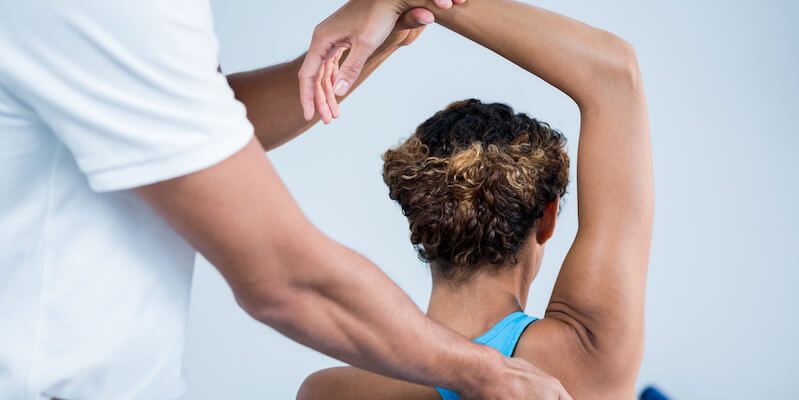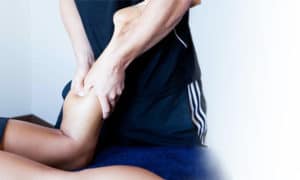There are a variety of different styles, types and techniques of massage utilized by massage therapists. We’ve provided a description of some of the more popular and well known types of massage being used today.
» Craniosacral Therapy
» Deep Tissue Massage
» Myofascial Release
» Prenatal Massage
» Shiatsu
» Sports Massage
» Trigger Point Therapy
» Eastern Style Modalities
Targeted Treatments
Therapeutic Techniques Focused on Specific Areas
At Massage Remedies, we understand the busy schedules that our guests have each day but also realize the necessity to incorporate massage therapy into your lifestyle. Tackle your demanding to-do list with greater vitality by scheduling 30-minute targeted treatment appointment. Designed to provide therapeutic relief, targeted treatments involve a shorter session with great benefits. The minimal time commitment, allows you to get in and out without disrobing, can help you significantly improve and maintain your overall health and wellness.
Upper Body Focus: Neck & Shoulders

Many people retain stress in the neck and shoulder area that only gets worse over time. With this 30-minute session, the massage therapist will focus on the areas of pain and stress in the upper body to relieve tension and alleviate discomfort. This treatment targets the front and back of the neck, shoulders, arms, and hands.
Not only can it help alleviate muscle tension and pain, but it can also:
- Relieve tension headaches
- Increase range of motion
- Boost circulation
- Reduce pressure and pain
- Enhance strength
This treatment may provide significant relief for guests who suffer symptoms such as tension headaches, shooting pain, tingling of the upper extremities, weakness, reduced sensation, or numbness.
Lower Body Focus: Legs & Feet

Reflex points located in your legs and feet can be responsible for the state of the body as a whole. Relief and stimulation to certain areas addressed during this session can help to alleviate back pain, address nasal sinuses, and much more. Relieve pain and improve your overall mood with this 30-minute treatment that focuses on the legs and feet while providing maximum benefits to the entire body.
Additional ways this treatment can provide benefit:
- Alleviate any inflammation in the lower legs
- Reduce tension deep in the calf muscles
- Engage in easier movement of the feet
- Relieve fatigue of the body
- Stimulate blood circulation
Lower leg and foot treatments can also be very beneficial for guests dealing with symptoms such as Achilles tendonitis/tendonosis, chronic compartment syndrome, shin splints, plantar fasciitis, and other ailments of the feet or lower legs.
Craniosacral Therapy
Craniosacral therapy (also called CST, also spelled CranioSacral bodywork or therapy) is an alternative medicine therapy used by osteopaths, massage therapists, naturopaths, chiropractors, and occupational therapists. A craniosacral therapy session involves the therapist placing their hands on the patient, which they say allows them to tune into what they call the craniosacral system. The practitioner gently works with the spine and the skull and its cranial sutures, diaphragms, and fascia. In this way, the restrictions of nerve passages are said to be eased, the movement of cerebrospinal fluid through the spinal cord is said to be optimized, and misaligned bones are said to be restored to their proper position. Craniosacral therapists use the therapy to treat mental stress, neck and back pain, migraines, TMJ Syndrome, and for chronic pain conditions such as fibromyalgia.
Deep Tissue Massage
Deep Tissue massage is designed to relieve severe tension in the muscle and the connective tissue or fascia. This type of massage focuses on the muscles located below the surface of the top muscles. Deep tissue massage is often recommended for individuals who experience consistent pain, are involved in heavy physical activity, such as athletes, and patients who have sustained physical injury. It is also not uncommon for receivers of Deep Tissue Massage to have their pain replaced with a new muscle ache for a day or two. Deep tissue work varies greatly. What one calls deep tissue another will call light. When receiving deep tissue work it is important to communicate what you are feeling.
Myofascial Release
Myofascial release is a form of soft tissue therapy used to treat somatic dysfunction and accompanying pain and restriction of motion. This is accomplished by relaxing contracted muscles, increasing circulation, increasing venous and lymphatic drainage, and stimulating the stretch reflex of muscles and overlying fascia.
Prenatal Massage
Prenatal massage is similar to massage during non-pregnancy in terms of the goals (relaxation, pain relief, increased circulation & mobility, etc.). However, due to the changes undergone during pregnancy, modification are made. To accommodate swollen tender breasts and a growing belly, special pillows, positioning and techniques are utilized to ensure comfort for both the expecting mother and baby. With increasing weight, a changing center of gravity and the many other changes associated with pregnancy, prenatal massage can help provide relief and a sense of well being that is much deserved.
Shiatsu
Shiatsu (指圧) (“shi” meaning finger and “atsu” meaning pressure.) is an eastern (oriental) born therapy that uses pressure applied with thumbs, fingers and palms to the same energy meridians as acupressure and incorporates stretching. It also uses techniques such as rolling, brushing, vibrating, grasping and in one particular technique developed by Suzuki Yamamoto, pressure is applied with the feet on the persons back, legs and feet (special set up is required for the “foot” shiatsu).
Sports Massage
Sports massage is actually a form of Swedish massage that is delivered to athletes. Most commonly, sports massage focuses on increasing blood and lymphatic fluid flow, reducing and eliminating pain as well as tender trigger points, and increasing range of motion of the affected area. Sports massages can be broken into 4 distinct types – the pre-event sports massage, the post-event sports massage, the restorative sports massage and the rehabilitative sports massage. As the names indicate, each type of sports massage has a different focus for the athlete as they are delivered at different times during their training and performance schedule.
Trigger Point Therapy
Trigger points or trigger sites are described as hyperirritable spots in skeletal muscle that are associated with palpable nodules in taut bands of muscle fibers. Trigger point practitioners believe that palpable nodules are small contraction knots[ambiguous] and a common cause of pain. Compression of a trigger point may elicit local tenderness, referred pain, or local twitch response. The local twitch response is not the same as a muscle spasm. This is because a muscle spasm refers to the entire muscle entirely contracting whereas the local twitch response also refers to the entire muscle but only involves a small twitch, no contraction. The trigger point model states that unexplained pain frequently radiates from these points of local tenderness to broader areas, sometimes distant from the trigger point itself. Practitioners claim to have identified reliable referred pain patterns, allowing practitioners to associate pain in one location with trigger points elsewhere.
Tui-Na
Tui na is a hands-on body treatment that uses Chinese taoist principles in an effort to bring the eight principles of Traditional Chinese Medicine (TCM) into balance. The practitioner may brush, knead, roll, press, and rub the areas between each of the joints, known as the eight gates, to attempt to open the body’s defensive chi (Wei Qi) and get the energy moving in the meridians and the muscles.[2] Techniques may be gentle or quite firm. The name comes from two of the actions: tui means “to push” and na means “to lift and squeeze.” Other strokes include shaking and tapotement.[3] The practitioner can then use range of motion, traction, with the stimulation of acupressure points. These techniques are claimed to aid in the treatment of both acute and chronic musculoskeletal conditions, as well as many non-musculoskeletal conditions.
Eastern Style Modalities
The Eastern style of massage is all about balancing energy meridians within the body. Instead of targeting one issue that the recipient may be facing, such as a sore back, Eastern massage attempts to heal the root cause of the issue and promote overall health and wellness.
The first difference you may notice with Eastern massage if you are accustomed to Western techniques is that there is usually a longer period of discovery. In any massage, the practitioner will likely ask where you are experiencing pain or discomfort. But with Eastern massage, the therapist will perform his or her own discovery mission by checking pulse points in your wrist and evaluating your tongue.
The next difference you will notice is that Eastern techniques can be more rigorous than Western. By striking, rolling and applying pressure to various pressure points, the therapist will attempt to address the cause of your pain, discomfort or other issue.